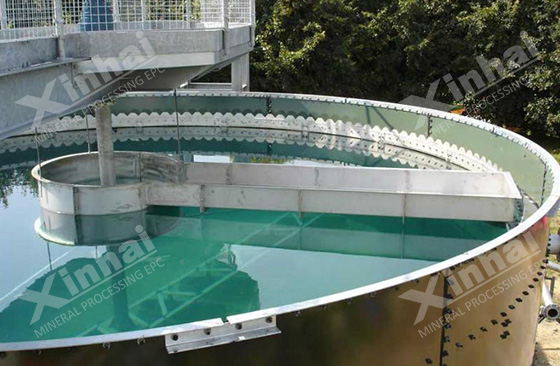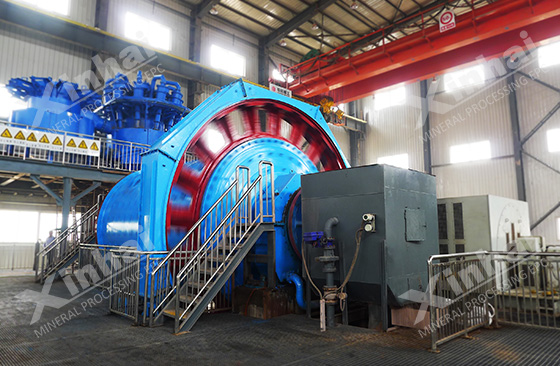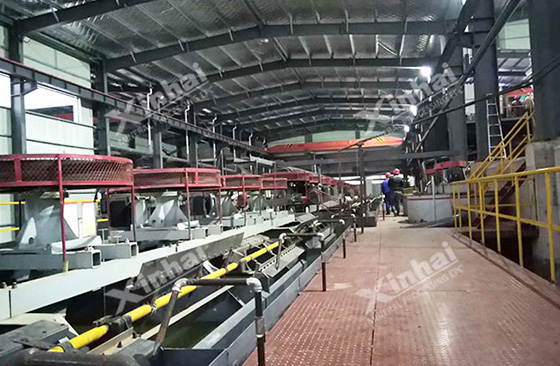
The metal mineral tailings reprocessing is crucial to environmental protection and sustainable development. Improper treatment methods will lead to soil and water source pollution, adversely affecting the surrounding ecological environment. Therefore, it is necessary to adopt reasonable technology to develop and utilize metal mineral tailings resources. For different metal ore tailings, the components and ore components are different, and the technologies used are also different. The following will introduce you to several technologies for metal ore tailings reprocessing.
This technology is mainly used for iron ore tailings with a grade of more than 10%, which can reduce the iron grade in the tailings to about 5% and reduce the loss of iron resources in the tailings. This technology adopts a two-stage grinding-magnetic separation-anion reverse flotation process. The grinding and magnetic separation are stage grinding and stage separation. The flotation process is one coarse and three sweeps, and the medium obtained from the three sweeps returns to be processed. The underflow of coarse separation is concentrate, and the foam of three sweeps is tailings. In order to ensure the grinding efficiency, the products on the screen need to be concentrated and magnetically separated. The key technology of this technology is strong magnetic separation to extract coarse concentrate-fine grinding-weak magnetic separation - reverse flotation silicon removal process technology, which can effectively extract the ferromagnetic substances in the tailings to produce iron concentrate powder.

This technology mainly uses the tailings of vanadium-titanium magnetite iron beneficiation as raw material. After a stage of strong magnetic separation and tailing, the obtained crude titanium concentrate is subjected to a stage of closed-circuit grinding and weak magnetic iron sweeping, and then the second stage is carried out. Strong magnetic separation. After the second-stage strong magnetic separation tailings undergo reverse flotation and sulfur removal operations, they enter the full-grain titanium flotation operation. After one coarse and four fine separation operations, titanium concentrate can be obtained. This technology has the advantages of novel technology, reliable technology, high metal recovery rate, stable equipment operation, and easy operation. It can increase the recovery rate of useful minerals while reducing resource waste.
The flotation tailings are roughed and swept through a flotation column to obtain a coarse concentrate, which is concentrated by a thickener and sent to a mixing barrel for heating and detoxication. The slurry is then diluted to a certain concentration and then refined. The selection operation adopts one fine and rough selection, five times of selection and three times of fine sweeping to obtain qualified tungsten concentrate, and then through filter press and drying to obtain tungsten concentrate products with qualified grade and moisture content. The improved technology has a better recovery effect of the lowest grade scheelite, and has the advantages of low production cost, stable equipment maintenance, and simple use of chemicals. This technology has been widely used in some low-grade scheelite concentrators.

This technology can be divided into four process flows according to different conditions of the ore:
(1) After medium magnetic separation and high gradient strong magnetism, sodium carbonate, water glass, acidified water glass or modified oleic acid is used for flotation. Fluorite concentrate can be obtained after flotation. This technology can be used when there are many magnetic minerals containing silicon and the monomer dissociation degree of fluorite is high.
(2) First use sodium carbonate, water glass, acidified water glass or modified oleic acid for flotation, and the obtained coarse concentrate is reground, and then subjected to high-gradient strong magnetic separation to obtain fluorite concentrate. This technology can be used when there are relatively few silicon-containing magnetic minerals and the monomer dissociation degree of fluorite is not high.
(3) When there are relatively few silicon-containing magnetic minerals and the monomer dissociation degree of fluorite is high, flotation is used, using sodium carbonate, water glass, acidified water glass or modified oleic acid. The obtained crude concentrate will not Return to the regrinding system for processing, and directly perform high-intensity magnetic separation process to obtain fluorspar concentrate.

(4) The tailings are first treated with medium magnetic separation and high-intensity magnetic separation technology, and then flotation is performed using sodium carbonate, water glass, acidified water glass or modified oleic acid. After flotation, high-gradient strong magnetic separation is performed to obtain phosphorus. Stone concentrate. This technology is used when there are a lot of silicon-containing magnetic minerals that cannot be effectively removed by one-stage magnetic separation and the monomer dissociation degree of fluorite is high.
The above are the four technologies for metal ore tailings reprocessing. According to changes in ore components, the mineral processing technology should be appropriately adjusted to improve the utilization rate of tailings and effectively recover useful ore components in the ore. The processing, recycling and reuse of tailings can help reduce resource waste, reduce environmental risks, and promote the sustainable development of the mining industry.
To find out more about our products and solutions, please fill out the form below and one of our experts will get back to you shortly.